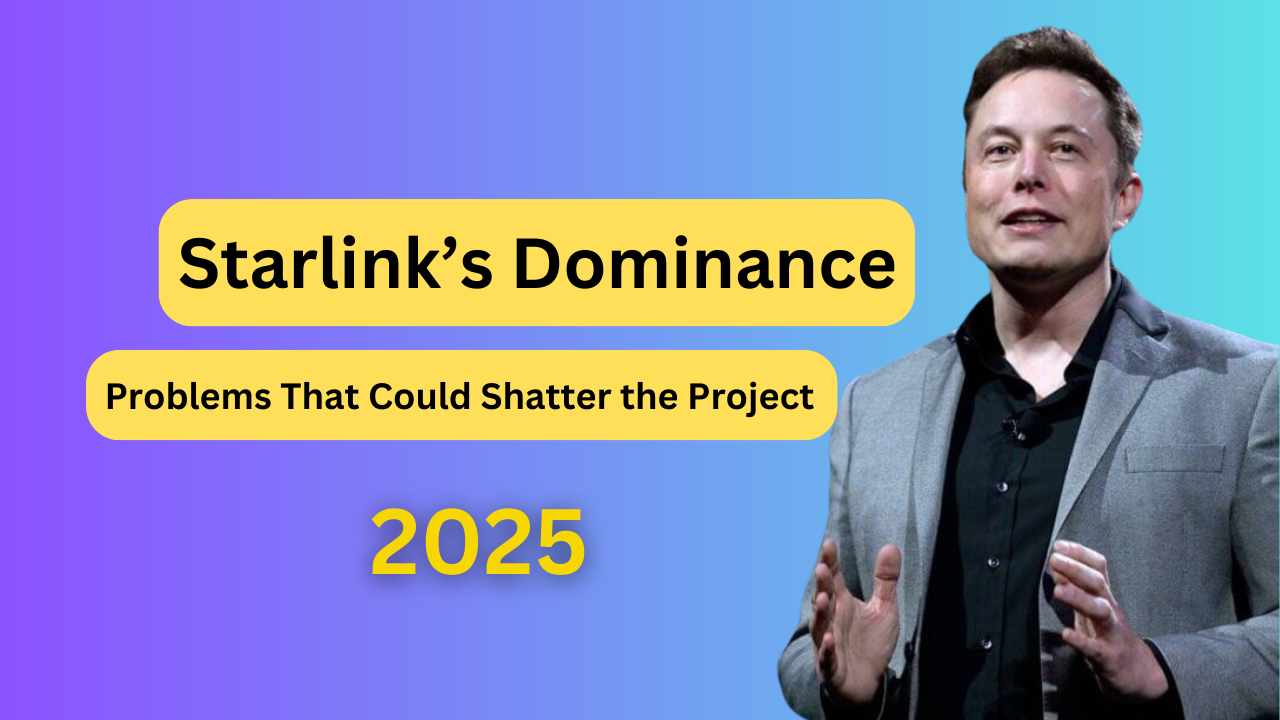Ultra-fast global internet provided by satellites is not an unattainable fantasy anymore. The Starlink initiative, which is under the management of SpaceX, seeks to put into orbit thousands of satellites in what is called Low Earth Orbit (LEO) for the purpose of providing broadband coverage all over the globe. Although this has the capability to revolutionize the way we communicate, Starlink has its own critical problems. In this post, we cover three such problems that could put a dent in the project and look at the possible positive outcomes for connectivity.
Also Read Leading 5 Eco Friendly Business Ideas For New Entrepreneurs in 2025
1. The Space Debris Dilemma: Moving Around the Orbital Junkyard
Jim Session, director of strategic initiatives at the Office of Space Commerce, observed in a presentation to the American Institute of Aeronautics and Astronautics that the deployment of a large number of satellites into low Earth orbit raises concern over the mounting risk of creating space debris, which is the death knell for sustained space access. While aiming to provide global coverage, Starlink promises to deploy thousands of satellites. With that level of saturation, the chances of collisions between satellites increase greatly. This satellites, creates debris, resulting in space becoming even more congested. This phenomenon has the potential to set off what is known as Kessler Syndrome, whereby space becomes unfriendly because satellites keep colliding and create debris perpetually.
Despite the concerns, SpaceX is working to mitigate the issue. Each Starlink satellite is built to deorbit and disintegrate in the atmosphere at the end of its life. Furthermore, SpaceX’s use of propulsion systems to prevent potential collision demonstrates their efforts in mitigating space debris.
Silver Lining: Starlink’s contribution to managing orbital debris might influence future space projects involving satellites. With the appropriate policies and technology, we can enhance safety in space for all.
2. Regulatory Battles: Navigating Local and Global Politics
Starlink is confronted by yet another complication, which stems from regulation. The company requires approval from other governments before it can expand into new countries, and each government has its own set of rules regarding internet infrastructure, frequency allocation, and national security. Some governments may be more restrictive towards foreign satellite networks due to fears of espionage or data security.
Starlink also has to deal with other international organizations, such as the ITU, which allocate frequencies and orbital positions. This has its own set of policies and treaties which must be adhered to, which could create further delays towards expansion.
Opportunities and Challenges: The issues posed by regulations might assist in the creation of global standards for satellite internet services. Starlink’s impact may persuade nations to work towards a unified approach to internet service availability for people worldwide.
3. Market Share Overlap: Who Gets What Piece of the Pie?
Starlink is now feeling the heat of new competitors entering the market. Kuiper Networks and OneWeb are also deploying satellites to establish internet service networks. Starlink may be subjected to a price war that would make it difficult for the company to remain competitively viable.
In addition, the proliferation of new technology is further heightening the level of competition, in particular the advancement of 5G technology, which makes satellite services less essential, especially in well-served metropolitan areas. It remains to be seen if there is sufficient market potential to accommodate multiple satellite internet providers.
Opportunities and Challenges: Other providers in the market might be a game changer. Increased competition will require Starlink to enhance its technology, deliver quicker speeds, and set more reasonable prices. For regions lacking ground-based options, satellite internet will continue to be imperative.
Also Read 3 Important Bible Verses for Healing a Broken Heart
Conclusion: Looking Forward to the Connectivity Beyond the Challenges
Even though Starlink has encountered some major issues with space junk, fighting through regulations, and dealing with marketplace overspend, their potential to narrow the digital gap remains significant. If Starlink tackled these issues directly, they could greatly assist in knitting the world together. The good news is that these efforts will advance global connectivity and also aid to respond to disasters and provide internet access in rural areas.
Starlink still holds serious risks. With that said, its innovation in space technology and wireless connectivity has the promise to profoundly change how humans interact and interrelate across the globe.
FAQs on Starlink’s Dominance
What is Starlink, and how does it work?
Starlink is a satellite-based internet service launched by SpaceX, aimed at providing high-speed broadband access globally. It works by deploying thousands of small satellites into low Earth orbit, which communicate with ground stations to offer internet connectivity. This system is designed to offer internet access to remote and underserved regions where traditional broadband infrastructure is unavailable.
How does Starlink address space debris concerns?
SpaceX is aware of the risks space debris poses, especially with the large number of satellites Starlink intends to launch. To mitigate this, each Starlink satellite is designed to deorbit and burn up in the Earth’s atmosphere once it is no longer operational. Additionally, SpaceX uses propulsion systems to move satellites out of the way of potential collisions, helping to reduce the creation of more debris.
Will Starlink face competition from other satellite internet providers?
Yes, Starlink faces growing competition from other companies like Amazon’s Project Kuiper and OneWeb, both of which are also working on satellite internet projects. With more players in the market, Starlink will have to stay competitive in terms of pricing, speed, and service quality. However, this competition can also drive innovation, improving overall service offerings in the satellite internet sector.

